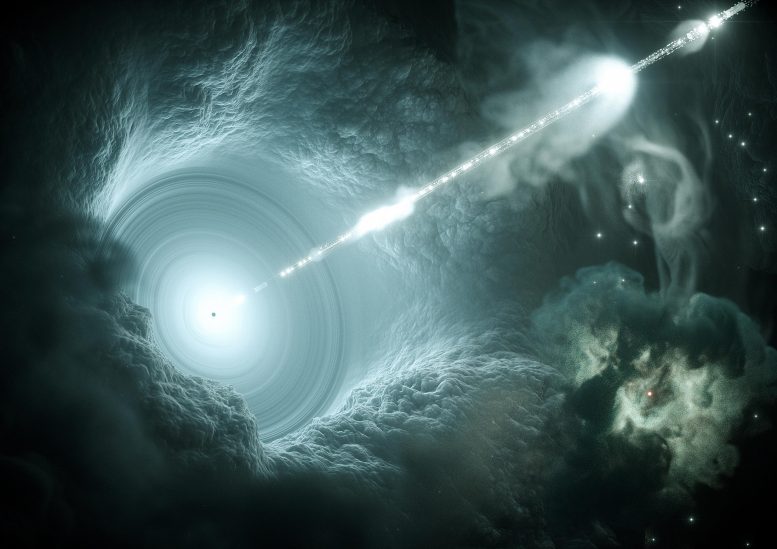A team of astronomers from various universities has spotted the farthest example of a rare class of gamma-ray emitting galaxies. This galaxy called which is classified as a BL Lacertae object was discovered at cosmic dawn, within the first two billion years of the age of the universe.
A paper outlining this discovery appeared recently in The Astrophysical Journal Letters and the team included researchers from DESY, Universidad Complutense de Madrid, University of California Riverside and Clemson University.
The team used Gran Telescopio Canarias (GTC) for this discovery. This telescope located at the Observatorio del Roque de los Muchachos on the island of La Palma is one of the largest optical telescopes in the world.
Astronomical data shows that only a small fraction of the galaxies release gamma rays, the most energetic form of light. Scientists suggest that these gamma rays come from supermassive black hole at the centre of these galaxies. Such galaxies are called as active galaxies.
Very few of these active galaxies have their jets pointed towards Earth and these are called as Blazars.
Coming to the classification of Blazars, they are of two types,
- BL Lacertae (BL Lac) objects
- Flat-spectrum radio-quasars (FSRQs).
FSRQs are younger active galaxies which are rich in dust and gas that surround the central black hole. With time, the amount of matter available to feed the black hole is consumed and the FSRQ evolves to become a BL Lac object. “In other words, BL Lacs may represent the elderly and evolved phase of a blazar’s life, while FSRQs resemble an adult,” explains Vaidehi Paliya from DESY, first author of the paper.
“Since the speed of light is limited, the farther we look, the earlier in the age of the Universe we investigate,” says Alberto Domínguez from the Institute of Physics of Particles and the Cosmos (IPARCOS) at Universidad Complutense de Madrid and co-author of the study.
The most distant FSRQ was identified at a distance when the age of the universe was merely a billion years. For comparison, the previously farthest BL Lac was found at an age when the Universe was around 2.5 billion years old, supporting the hypothesis of the evolution from FSRQ to BL Lacs.
But the recently discovered BL Lac object with the catalogue number 4FGL J1219.0+3653, is substantially farther away than the previous record holder.
“We have discovered a BL Lac existing even 800 million years earlier, this is when the Universe was less than 2 billion years old,” reports co-author Cristina Cabello, a graduate student at IPARCOS.
These findings are important as they challenge the fundamental idea that BL Lacs are evolved from FSRQs
Journal Reference:
Vaidehi S. Paliya, A. Domínguez, C. Cabello, N. Cardiel, J. Gallego, Brian Siana, M. Ajello, D. Hartmann, A. Gil de Paz and C. S. Stalin, The First Gamma-Ray Emitting BL Lacertae Object at the Cosmic Dawn 27 October 2020, Astrophysical Journal Letters. DOI: 10.3847/2041-8213/abbc06

